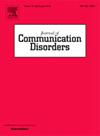Benefits of speech recognition in noise using remote microphones for people with typical hearing
IF 2.1
3区 医学
Q2 AUDIOLOGY & SPEECH-LANGUAGE PATHOLOGY
引用次数: 0
Abstract
Introduction
Remote microphone (RM) systems are designed to enhance speech recognition in noisy environments by improving the signal-to-noise ratio (SNR) for individuals with typical hearing (TH) and hearing impairment (HI). The aim of this investigation was to evaluate the advantages of speech recognition in noise for individuals with TH in a simulated group setting using two different remote microphones.
Methods
A quasi-experimental, repeated-measures design was employed, involving ten participants with TH, ages 20 to 63 years. Each were fit with Roger Focus receivers bilaterally to listen to three RM conditions: Roger Select, Roger Pen, and no technology. Participants were instructed to transcribe sentences that were presented randomly at varying signal-to-noise ratios (SNRs: 0, -5, and -10 dB) from five speakers positioned equidistant around a circular table to simulate a group dining scenario.
Results
Significant main effects of the technology condition and noise level (p < .05) were found. Participants exhibited superior performance with Roger Select compared to Roger Pen. As expected, recognition rates decreased with lower SNRs across all three technology conditions.
Conclusions
To enhance speech recognition in group settings for individuals with TH, the utilization of the Roger Select microphone in conjunction with bilateral Roger Focus receivers is recommended over the Roger Pen
使用远程麦克风进行噪声语音识别对具有典型听力的人有好处。
引言:远程麦克风(RM)系统旨在通过提高典型听力(TH)和听力障碍(HI)患者的信噪比(SNR)来增强噪声环境中的语音识别能力。本调查的目的是在模拟群体环境中使用两种不同的远程麦克风,评估有典型听力障碍的人在噪声环境中进行语音识别的优势:采用了准实验、重复测量设计,共有 10 名患有听力障碍的参与者参加,他们的年龄在 20 岁至 63 岁之间。每个人的双侧都安装了 Roger Focus 接收器,以聆听三种 RM 条件:Roger Select、Roger Pen 和无技术。参与者被要求抄写在不同信噪比(SNR:0、-5 和 -10 dB)下随机播放的句子:结果发现,技术条件和噪音水平具有显著的主效应(p < .05)。与 Roger Pen 相比,Roger Select 的识别率更高。正如预期的那样,在所有三种技术条件下,识别率随着信噪比的降低而降低:为了提高 TH 患者在集体环境中的语音识别能力,建议使用 Roger Select 麦克风和双侧 Roger Focus 接收器,而不是 Roger Pen。
本文章由计算机程序翻译,如有差异,请以英文原文为准。
求助全文
约1分钟内获得全文
求助全文
来源期刊

Journal of Communication Disorders
AUDIOLOGY & SPEECH-LANGUAGE PATHOLOGY-REHABILITATION
CiteScore
3.30
自引率
5.90%
发文量
71
审稿时长
>12 weeks
期刊介绍:
The Journal of Communication Disorders publishes original articles on topics related to disorders of speech, language and hearing. Authors are encouraged to submit reports of experimental or descriptive investigations (research articles), review articles, tutorials or discussion papers, or letters to the editor ("short communications"). Please note that we do not accept case studies unless they conform to the principles of single-subject experimental design. Special issues are published periodically on timely and clinically relevant topics.
 求助内容:
求助内容: 应助结果提醒方式:
应助结果提醒方式:


